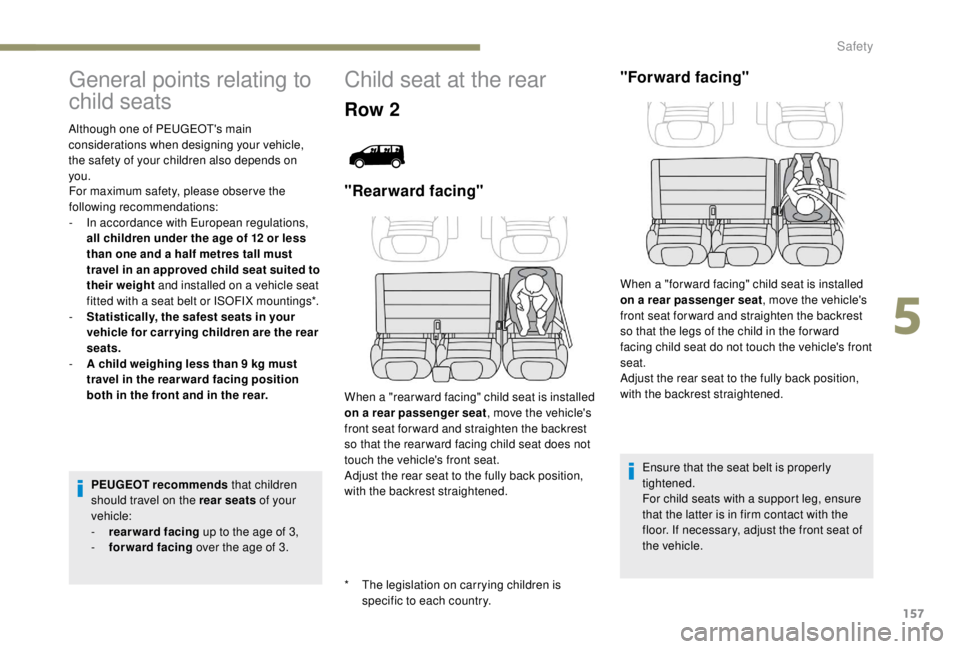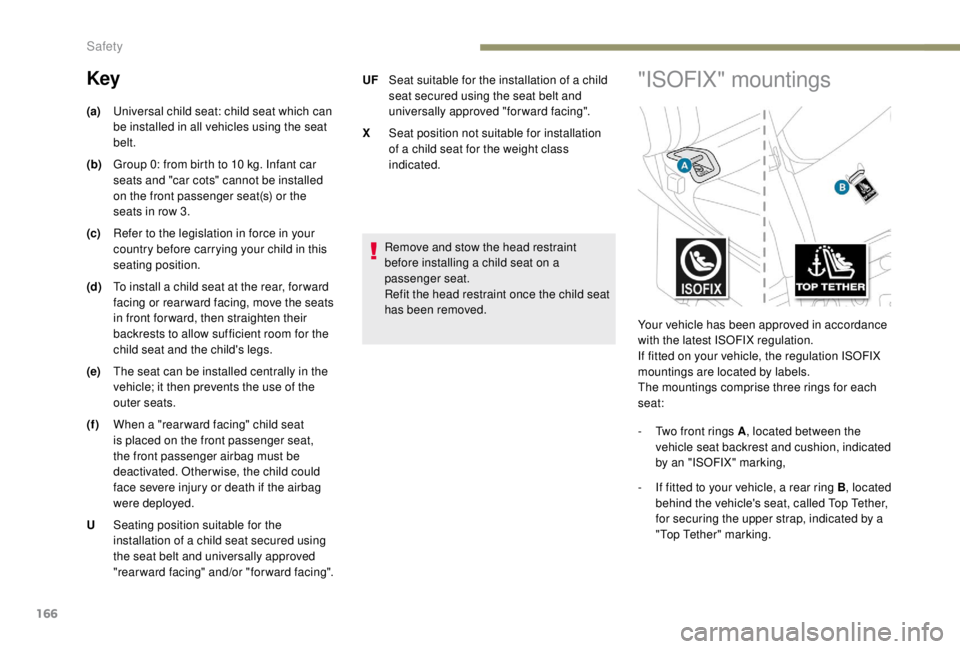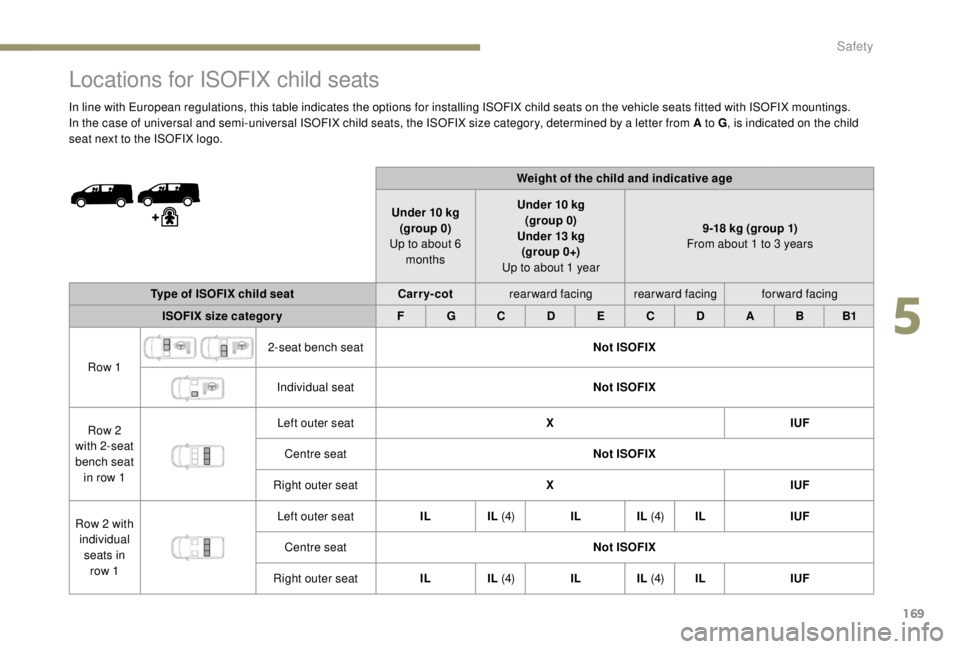Page 75 of 416

73
Fuel filler flap
If your vehicle is equipped with one, do not
open the sliding left side door when the
fuel filler flap is open, other wise there is a
risk that the fuel filler flap and the sliding
door will be damaged and the person
filling up will be injured.
If the fuel filler flap is open and you open
the left side door, a mechanism prevents it
being opened.
The door can be opened half way
h o w eve r.
With a mechanical door, close the fuel
filler flap again to regain use of the door.
With an electrical door, in order to be able
to use it correctly, close the fuel filler flap
then press an opening button.
On a steep slope
It is possible to open and close doors
electrically on slopes of up to a 20% gradient.
However, if your vehicle is on a slope, with the
front of the vehicle facing up, open the door
with care. The door may open more quickly due
to the incline.
On a steep slope, guide the side door manually
to help it to close.However, if your vehicle is on a slope, with the
front of the vehicle facing down, the door may
not stay open and may close again jerkily with
the risk of injury.
In the case of a steep slope, the door
may be driven by its own weight and as a
consequence may open or close jerkily.
There would not be time for action at the
electric controls to take effect.
There would not be time for the
obstacle detection system to react.
Take care not to leave the vehicle on a
steep slope with the door(s) open without
supervision. If this advice is not followed,
injuries or damage may occur if a person
or an object is trapped or caught.
2
Access
Page 159 of 416

157
General points relating to
child seats
* The legislation on carrying children is specific to each country.
Although one of PEUGEOT's main
considerations when designing your vehicle,
the safety of your children also depends on
you.
For maximum safety, please obser ve the
following recommendations:
-
I
n accordance with European regulations,
all children under the age of 12
or less
than one and a half metres tall must
travel in an approved child seat suited to
their weight and installed on a vehicle seat
fitted with a seat belt or ISOFIX mountings*.
-
S
tatistically, the safest seats in your
vehicle for carr ying children are the rear
seats.
-
A c
hild weighing less than 9
kg must
travel in the rear ward facing position
both in the front and in the rear.
PEUGEOT recommends that children
should travel on the rear seats of your
vehicle:
-
re
arward facing
up to the age of 3,
-
fo
rward facing
over the age of 3.
Child seat at the rear
Row 2
Ensure that the seat belt is properly
tightened.
For child seats with a support leg, ensure
that the latter is in firm contact with the
floor. If necessary, adjust the front seat of
the vehicle.
"Rearward facing"
When a "rear ward facing" child seat is installed
on a rear passenger seat , move the vehicle's
front seat for ward and straighten the backrest
so that the rear ward facing child seat does not
touch the vehicle's front seat.
Adjust the rear seat to the fully back position,
with the backrest straightened.
"Forward facing"
When a "for ward facing" child seat is installed
on a rear passenger seat , move the vehicle's
front seat for ward and straighten the backrest
so that the legs of the child in the for ward
facing child seat do not touch the vehicle's front
seat.
Adjust the rear seat to the fully back position,
with the backrest straightened.
5
Safety
Page 166 of 416
164
Locations for child seats secured using the seat belt
In line with European legislation, the table indicates the options for installing child seats secured using a seat belt and universally approved (a) for the
weight of the child and the seat in the vehicle.Seats Weight of the child and indicative age
Under 13 kg (groups 0 (b) a n d 0 +)
Up to about 1 year 9 -18 kg
(g r o u p 1)
From about 1 to 3
years15 -25 kg
(group 2)
From about 3 to 6
years22-36 kg
(group 3)
From about 6 to 10
years
Cab/Row 1 (c) (f ) With individual seat,
passenger seat U
UUU
With bench seat, outer seat UUUU
With bench seat, centre seat XXXX
*
T
he folding bench seat is in the process of being approved.
Row 2 (d)
Left outer seat
UUUU
Centre seat UUUU
Right outer seat UUUU
Safety
Page 167 of 416
165
SeatsWeight of the child and indicative age
Under 13 kg
(groups 0 (b) and 0+)
Up to about
1
year old9 -18
kg
(g r o u p 1)
From about 1 to 3
years old15 -25
kg
(group 2)
From about 3 to 6
years old22-36
kg
(group 3)
From about 6 to 10
years old
Row 1
(c) With individual
seat,
passenger seat with passenger airbag
deactivated " OFF" U
UUU
with passenger airbag activated " ON" X
UFUFUF
With bench
seat, centre seat with passenger airbag
deactivated " OFF" X
XXX
with passenger airbag activated " ON" X
XXX
With bench
seat, outer seat with passenger airbag
deactivated " OFF" U
UUU
with passenger airbag activated " ON" X
UFUFUF
Row 2 Left outer seat
UUUU
Centre seat UUUU
Right outer seat UUUU
Row 3 Left outer seat
UUUU
Centre seat UUUU
Right outer seat UUUU
5
Safety
Page 168 of 416

166
Remove and stow the head restraint
before installing a child seat on a
passenger seat.
Refit the head restraint once the child seat
has been removed.
(a)
Universal child seat: child seat which can
be installed in all vehicles using the seat
belt.
(b) Group 0: from birth to 10
kg. Infant car
seats and "car cots" cannot be installed
on the front passenger seat(s) or the
seats in row 3.
(c) Refer to the legislation in force in your
country before carrying your child in this
seating position.
(d) To install a child seat at the rear, for ward
facing or rear ward facing, move the seats
in front for ward, then straighten their
backrests to allow sufficient room for the
child seat and the child's legs.
(e) The seat can be installed centrally in the
vehicle; it then prevents the use of the
outer seats.
(f ) When a "rear ward facing" child seat
is placed on the front passenger seat,
the front passenger airbag must be
deactivated. Otherwise, the child could
face severe injury or death if the airbag
were deployed.
U Seating position suitable for the
installation of a child seat secured using
the seat belt and universally approved
"rearward facing" and/or "forward facing". UF
Seat suitable for the installation of a child
seat secured using the seat belt and
universally approved "forward facing".
X Seat position not suitable for installation
of a child seat for the weight class
indicated.
Key"ISOFIX" mountings
Your vehicle has been approved in accordance
with the latest ISOFIX regulation.
If fitted on your vehicle, the regulation ISOFIX
mountings are located by labels.
The mountings comprise three rings for each
seat:
-
T
wo front rings A , located between the
vehicle seat backrest and cushion, indicated
by an "ISOFIX" marking,
-
I
f fitted to your vehicle, a rear ring B , located
behind the vehicle's seat, called Top Tether,
for securing the upper strap, indicated by a
"Top Tether" marking.
Safety
Page 171 of 416

169
Locations for ISOFIX child seats
In line with European regulations, this table indicates the options for installing ISOFIX child seats on the vehicle seats fitted with ISOFIX mountings.
In the case of universal and semi-universal ISOFIX child seats, the ISOFIX size category, determined by a letter from A to G, is indicated on the child
seat next to the ISOFIX logo.
Weight of the child and indicative age
Under 10 kg (group 0)
Up to about 6 months Under 10 kg
(group 0)
Under 13 kg (group 0+)
Up to about 1 year 9-18 kg (group 1)
From about 1 to 3 years
Type of ISOFIX child seat Carr y- cotrearward facing rearward facing forward facing
ISOFIX size categor y F G C D E C D A B B1
Row 1 2-seat bench seat
Not ISOFIX
Individual seat Not ISOFIX
Row 2
with 2-seat
bench seat in row 1 Left outer seat
XIUF
Centre seat Not ISOFIX
Right outer seat XIUF
Row 2 with individual seats in row 1 Left outer seat
IL IL (4)IL IL (4)IL IUF
Centre seat Not ISOFIX
Right outer seat IL IL (4)IL IL (4)IL IUF
5
Safety
Page 172 of 416
170
Weight of the child and indicative age
Under 10
kg
(group 0)
Up to about 6
months Under 10
kg
(group 0)
Under 13
kg
(group 0+)
Up to about 1
year 9-18
kg (group 1)
From about 1
to 3 years
Type of ISOFIX child seat Carr y- cot (1)rearward facing rearward
facing forward facing
ISOFIX size categor y F G C D E C D A B B1
Row 1
(a) Individual passenger
seat or 2-seat bench seat with passenger
airbag deactivated "OFF " Not ISOFIX
with passenger
airbag activated "ON " Not ISOFIX
Row 2 Left outer seat
XIL (3) IL (2) IL IL (2) I U F, I L
Centre seat (b) XIL (3) IL (2) IL IL (2) I U F, I L
Right outer seat XIL (3) IL (2) IL IL (2) I U F, I L
Safety
Page 173 of 416
171
Weight of the child and indicative age
Under 10
kg
(group 0)
Up to about 6
months Under 10
kg
(group 0)
Under 13
kg
(group 0+)
Up to about 1
year 9-18
kg (group 1)
From about 1
to 3 years
Type of ISOFIX child seat Carr y- cot (1)rearward facing rearward
facing forward facing
ISOFIX size categor y F G C D E C D A B B1
Row 3 Fixed rear seat and
bench seat Left outer seat
XXXI U F, I L
Centre seat (b) XXXI U F, I L
Right outer seat XXXI U F, I L
Fixed one-piece bench seat Left outer seat
XXX X
Centre seat (b) XX XX
Right outer seat XX XX
5
Safety